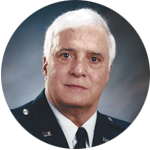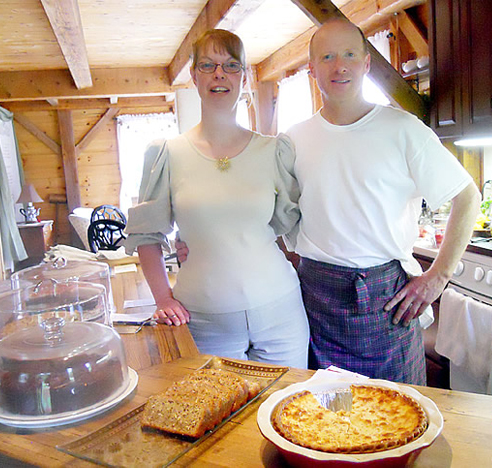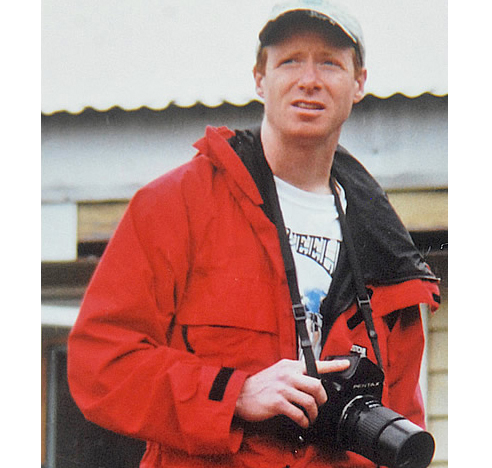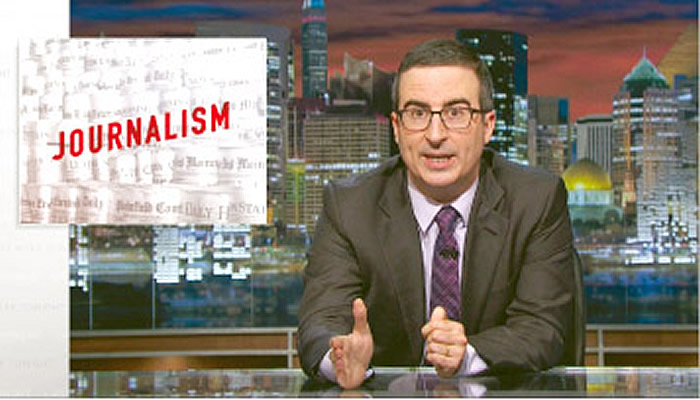Glenn Callahan, a longtime staff photographer at The Stowe (Vt.) Reporter, retired May 4, the day that also happened to mark his 25th year there.
During his time at the Reporter, a weekly newspaper with a circulation of about 4,600, Callahan would focus not on the subjects but rather the aesthetics of the photographs, an approach that he thought helped the publication to stand out against its competitors.
“My photos lean more towards the artistic side, not necessarily journalistic,” Callahan said.
His motto is “image first and story later,” a saying that might seem unusual for a staff photographer, but one that has been refined through his quarter-decade of experience.
Photography has always been in Callahan’s blood. His father, Alfred Callahan, had been a photographer with the U.S. Army, stationed at Fort Churchill in Manitoba, Canada, during the Korean War.
Callahan himself had always dabbled in photography, but after a detour to the University of Vermont to major in bioengineering, he found that science wasn’t fulfilling his creative side.
“It was fascinating, but being in a lab coat and being in an office all the time wasn’t for me,” he said.
So Callahan began to consider photography as a career more seriously, and began working for the former Beacon Communications Corp., based in Acton, Mass., that published newspapers in more than a dozen communities in Massachusetts.
Callahan had grown to love nature while being raised in the rural town of Carlisle, Mass., and when offered a job at Beacon Communications focused on shooting in the less-rural city of Marlboro, Mass., he declined because “I realized that if I took it, I would be photographing a lot of pavement.”
So Callahan ended up in Stowe. Throughout his 25 years there, he would also see his freelance photos in national and regional publications, including The New York Times and The Boston Globe. He won more than 40 photography awards from the New England Newspaper and Press Association and one of its predecessor organizations, the New England Press Association, and a couple of dozen photo awards from the Vermont Press Association. Callahan also placed among the top 100 winners in the international Ernst Haas photography competition.
Callahan said he keeps his photographs interesting by always trying to provide the unexpected.
“A lot of photojournalism is kind of rote. You know what’s going to happen and how it’s going to read, so I would always … try to find new ways to approach the subject,” Callahan said. “All I would do is look around and see what was different and what inspired me.”
Callahan said that in Stowe, a tourist town with a population of fewer than 5,000, alternative approaches are important for him. He is retiring in part because he thought that he had exhausted opportunities to take photographs in Stowe.
“You start going to the same events year after year, and it becomes a challenge to find anything new in them,” he said.
Callahan said that to find excitement in his work, he focuses on the image and the composition instead of the subject matter.
“A compelling photograph is clean, free of a lot of clutter and a lot of the extraneous stuff,” he said. “It’s really about the quality of the light that the subject’s in.”
Because of that outlook of his, some of Callahan’s favorite subjects are farmers in their barns.
“These New England cow barns have a really interesting aesthetic,” he said. “They often have low ceilings that are whitewashed so they provide beautiful lighting.”
Callahan also attributes good photography to post-production editing.
“I’ve noticed that since digital photography has come about, a lot of photographers think the work ends as soon as they trip the shutter,” he said. “But it just begins there. You can always make a photo better.”
Callahan said the digital revolution has also lowered the bar to getting a good photograph.
“It’s become a lot easier now; a reporter can go out with a digital camera and have a much better chance of getting a good Page One photograph. It’s made competition in the field pretty tight,” he said.
Fortunately, Callahan does not need to stay in the field much longer. He and his wife, Renate, recently opened Fledermaus, a tea house nestled in Johnson, Vt.
“I was in the middle of building this tinder-frame barn, when (Renate) had this great idea to do a European-style cafe. It is quite common in Germany and Switzerland for agricultural buildings to be turned into these cafes,” Callahan said,
Fledermaus serves coffee, tea, pastries and dishes to about 20 customers a day.
Although Callahan will continue doing freelance work for the Stowe Reporter’s sister publication, the Stowe Guide & Magazine, and for other clients, he appreciates the new opportunities that the cafe brings.
“We’re learning a lot, but it’s a hell of a lot of work,” he said.















Trump, Clinton show value of a free, independent press
Gene Policinski, inside the First Amendment
Gene Policinski is chief operating officer of the Newseum Institute and senior vice president of the Institute’s First Amendment Center. He can be reached at gpolicinski@newseum.org.
Follow him on Twitter:
@genefac
Donald Trump and Hillary Clinton might well be the best things that have happened to a free press in a long time.
“Best” not in terms of ratings, circulation, advertising or such, though some media will see a temporary bump up. And it’s certainly not because the pair are singing the news media’s praises. Far from it. Trump finds time seemingly every day to slam the “corrupt, dishonest, media.” And Clinton hasn’t had a news conference in … well, several reporters covering her campaign said in recent days they have lost track after about 250 on how many days it’s been since she last sat for one.
Rather, “best” in that each of these polarizing candidates in his and her own way is providing their fellow Americans on a regular basis a reminder of the value of a free and independent press — perhaps just the concept, if you don’t particularly like the ones you see, hear or read at the moment.
Trump is the most vocal, and has drawn the most critical attention from journalists. No surprise.
But he was and is the lesser known of the pair and still a mystifying collection of bluster, bombast, anger and angst, along with appeal to millions of voters. His propensity for drama would have been a lightning rod for news reporters in any era, let alone a time when news moves on the web at the speed of lightning — often prompted by the very verbal bolts Trump throws.
Meanwhile, Clinton’s leading publicists seem to range from Russian hackers to FBI investigators, as she and Democratic party leaders make regular headlines for what they wrote and read in private, now being made public, or the subject of a seemingly endless investigation.
Remember, I said both were good for a “free press.” Yes, there is the regular chant from many on both sides that reporters are biased, that coverage is inaccurate and that facts get twisted between the candidates’ lips and the ears and eyeballs of voters. And Trump’s hiring of a caustic media critic — Steve Bannon of Breitbart News — surely signals more collisions with the press reporting on the GOP campaign.
But even those doing that chanting rely on the facts reported by the press they like — and sometimes even the press they don’t. And there’s now a new industry of fact-checkers and citizen bloggers to call out professional journalists when they get it wrong. Lately, there’s even the odd billionaire who spent a small fortune to bring to heel a website, Gawker.com, that amazingly managed to find the ultimate and unacceptable bottom part of the “news” industry that thrives on smut, innuendo and smarmy chatter.
If this is a campaign season like none before, and at least it is in modern memory, it’s a free and independent press that calls Trump, Clinton, their surrogates and each other to account. When Clinton wrongly claimed that FBI director James Comey said she had told the public a consistent and truthful story about classified email on her private server while secretary of state, it was journalists who chased the truth — and she recanted.
When Trump has made any number of claims, from personal wealth to policy positions, it’s a free press that has chased down reports, former statements, court documents — and particularly in Trump’s case — produced the video that we can all watch and judge for ourselves.
Tough for many people to admit it, but we’re better off with the free press we have — as imperfect as it certainly is — than with just the political pabulum that campaigns would prefer to dish out, or the carefully crafted and shaped public-image moments each candidate’s teams are trying every day to stage-manage.
Worthy of note is that nearly three-fourths of adults in the most recent State of the First Amendment report, based on polling commissioned in May by the Newseum Institute’s First Amendment Center, said the press is biased when it reports the news.
We have so much “media” available today, from the rabid guard dogs around each candidate’s party or persona to the mainstream media reporters who still strive for that elusive journalistic holy grail of “objectivity.” Perhaps it’s tougher to cut through the incessant, 24/7 news stream, but many reporters and correspondents still are singing the Founders’ song, about an independent, irreverent, impolite press that asks the tough questions and raises the inconvenient fact.
Here’s a few facts about this year’s presidential race that are facts: For you online aficionados, it’s still the mainstream media that are doing the heavy lifting — checking claims, vetting developments and even providing much of the news that new-age ventures repackage and repeat. And for you mainstream types, it’s time to realize that by the time you show it or report it, we already know about it. What we need from you is more context, clarification and explanation.
There’s one more fact that we all need to keep in mind when thinking of the present and future of a free press. Neither candidate, if elected, is a “friend” to that core constitutional freedom. Each would place limits or remove legal protections for free expression in its most robust form, in the name of fighting terrorists or punishing unwelcome voices. But making those changes means a fight with the constitution, not just those who work in journalism.
At least, after decades of taking it on the collective chin from the economy, vast technological changes and news consumers who gobble the news for free, even as they criticize it, this year’s election season has shown again the value of having a free press every day, serving in our place to see and report the things we need to know.
In 1791, when the First Amendment and the rest of the Bill of Rights was ratified, even the most thoroughly partisan press in our nation’s history didn’t dissuade the Founders from seeing the value of those free voices to the democratic process.
Today, we should see no less value to an immensely better, more varied and more accessible set of voices — including our own through blogs, posts and comments — that collectively constitute “the press.”
Thanks in no small way to Donald and Hillary.